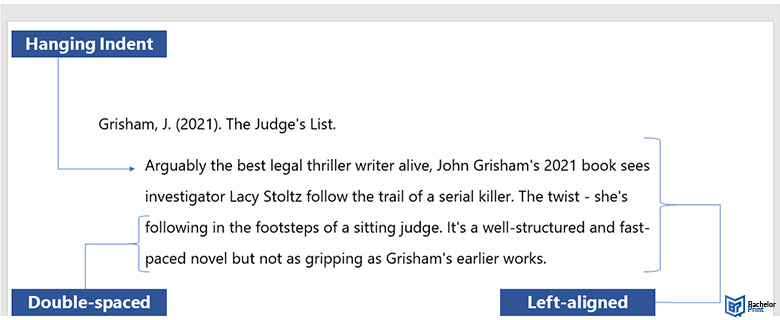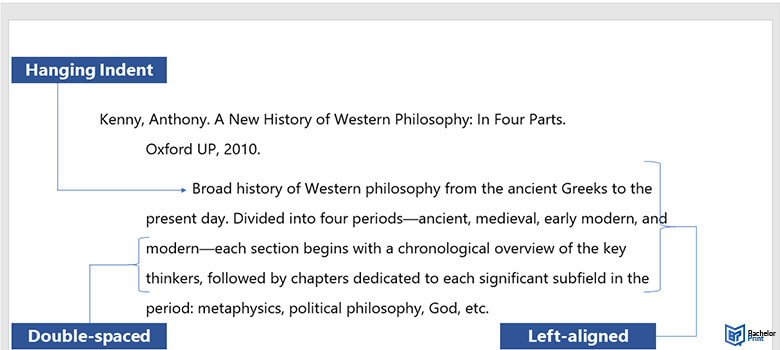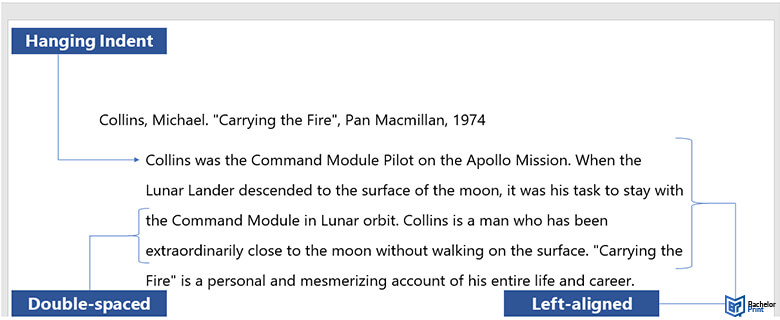
An annotated bibliography or an analytical bibliography includes the bibliographic reference of a set of works and a brief synthesis or review of these works. When citing sources, this descriptive or critical commentary aims either to inform the reader about the main ideas of a work or to measure the quality of a work by evaluating its credibility, accuracy, and relevance. This article provides insights into the format of an annotated bibliography and how to find relevant sources.
Definition: Annotated bibliography
An annotated bibliography (or analytical bibliography) consists of a list of references, each subject to a commentary by the person carrying out the exercise.
First, a bibliography is the list of sources referenced in a document. You should be familiar with this method for any academic essay you’ve written:
- Think about the APA-style references you usually include.
- Include important source information, such as author name, article title, publication date, and page number
An annotated bibliography is a list of sources used in the body of the work, including a brief summary of each source. These summary annotations assess the accuracy and quality of the information sources and identify any possible reason for bias.
An annotated bibliography should present the sources alphabetically in list form, like a standard bibliography. Source summaries are usually around 150 words, although this may vary depending on the nature of the original.
Annotated bibliography formatting
There are several recognized ways of formatting an annotated bibliography. Use the style recommended by your institution of learning.
1. APA style
Formatting your annotated bibliography is the same as formatting an APA reference list. You use the same author-date style and place the elements in the same order.
Here’s a quick rundown of the guidelines for an annotated bibliography in APA style:
- Right-aligned page number
- Running header (Optional)
- One-inch margins
- Double-spaced
- The title “Annotated Bibliography” centered
- Hanging indent for the second and subsequent lines of the citation
- Indent annotation of five spaces

2. MLA
In MLA, each annotation should be one paragraph, between three and six sentences long (about 150 – 200 words). Start with the same format as a regular Works Cited list.
All lines should be double-spaced. Do not add an extra line between the citations.

3. Chicago style
An annotated bibliography in Chicago style should be formatted as the following:
- The text should be double-spaced.
- Numbering starts on the first page of writing (not the title page) at the top right of the page.
- Reference list entries must have a hanging indent (to do this in Microsoft Word 2003, click Format, then Paragraph, then Special, and choose Hanging).
- There should be 1-inch (2.54 cm) margins all around (top, bottom, left, and right) on each page.
- Use Times Roman font or a similar serif font.
- Each paragraph should be indented using the tab key.

Writing an annotated bibliography
Follow these steps when writing an annotated bibliography:
| Element |
Comments |
| Heading | • Use a heading that indicates the subject of the entries • Center the heading at the top of the page |
| Introduction Optional | • Check your assignment instructions |
| Source entry A | • 100 - 200 words, depending on assignment instructions |
| Full citation | • Use the required referencing style as specified in your assignment instructions |
| Summary | • Concise description of the source • Including a summary of the key points and findings (check assignment instructions for the level of detail required) |
| Evaluation | • Briefly comment on the strengths and limitations of the source and the research it describes |
| Reflection | • Comment on the relevance of the source to your topic or field of study |
| Subheadings | • Optional (check assignment instructions) |
| Conclusion | • Optional (check your assignment instructions) |
Types of Annotations
| Descriptive annotations: | Evaluative annotations: | Reflective annotations: |
| • Describe the book, article, or another source • Information about whom the author(s) of the work are and their credentials, and a summary of the work's main points |
• Also known as "critical" annotations • Summarize the essential ideas in a document and provide judgments about their quality (negative, positive, or both) • Typically, three to four sentences long |
• Reflection on how useful the source is for your own research (for instance, if you are writing the annotated bibliography in preparation for a research essay) • You could be asked to reflect on how the source relates to the themes in your unit |
Finding sources for your annotated bibliography
Research projects and compositions, especially argumentative or positional texts, require you to collect sources, develop a thesis, and then support that thesis through an analysis of the evidence, including sources, that you have compiled, ideally from visiting the university library.
Start by gathering all materials, including books, Google Scholar, websites, professional journals, periodicals, and papers that may contain valuable insights on your topic. Your annotated bibliography should include primary, secondary, and even tertiary sources to achieve the best marks in an academic essay.
FAQs
The main differences between the APA style and MLA formats are:
- Creation of the title page
- In-text citations
- Reference lists
MLA uses the author-page number style for in-text citations, while an APA annotated bibliography uses the author-date citation style.
An annotated bibliography is a list of citations, which can include books, journal articles, and documents.
Each citation is usually followed by a brief description of the text and, more importantly, a critical evaluation.
The annotated bibliography adds descriptive and evaluative comments (i.e., an annotation), assessing the nature and value of the cited works. The addition of commentary provides the future reader or researcher essential critical information and a foundation for further research.
